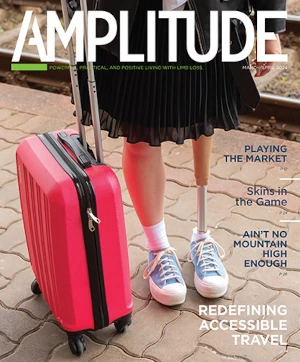
About 80 percent of Americans will suffer from back pain at one time or another. A recent study found that more than a third of adults say that low back pain has affected their ability to perform the tasks of daily living, exercise, or sleep. Treating this pain, which is a common complaint for lower-limb amputees and is chronic for millions of people, remains a difficult problem.
Now, a study by scientists at the University of Maryland School of Medicine (UM SOM) has concluded that yoga may be helpful for low back pain. The study appeared in the online journal Cochrane Library.
“We found that the practice of yoga was linked to pain relief and improvement in function,” said the study’s lead author, L. Susan Wieland, PhD, MPH.. “For some patients suffering from chronic non-specific low back pain, yoga may be worth considering as a form of treatment.”
Wieland and her co-authors reviewed 12 separate studies. The trials, which included more than 1,000 participants, compared yoga to a non-exercise intervention, such as educational material given to a patient, or to an exercise intervention, such as physical therapy. The researchers found that there was low to moderate certainty evidence that at three and six months, patients using yoga had small to moderate improvements in back-related function, as well as small improvements in pain.
Yoga performed about the same as non-yoga exercise in terms of improving back function at three and six months, although the researchers found few studies comparing yoga to other exercise and therefore considered the evidence to be very low certainty.
Yoga is a physical and spiritual practice that originated more than 2,000 years ago in India. Over the past several decades, it has become increasingly popular in the United States and other Western countries. It typically involves a combination of physical movements, controlled breathing, and relaxation or meditation.
Most of the trials used Iyengar, Hatha, or Viniyoga forms of the practice. Because all study participants knew whether or not they were practicing yoga, and their reporting of changes in pain and functioning could have been affected by this knowledge, the study outcomes could only be graded with moderate certainty at best. The study also found that patients using yoga had more adverse effects than patients who did not use exercise, but had similar rates of adverse effects as patients who used non-yoga exercise. The adverse effects were mostly increases in back pain. Yoga was not associated with serious side effects.
This article was adapted from information provided by UM SOM.



